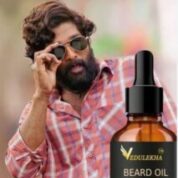What is High Porosity Hair?
High porosity hair is hair that has a raised cuticle layer which allows moisture to enter and exit the hair shaft too quickly. This type of hair is often described as “thirsty” and is prone to dryness, frizz, tangles, and breakage. High porosity hair can be caused by various factors including genetics, heat damage, chemical processing, and excessive use of hair styling tools. Understanding and managing high porosity hair is important for maintaining healthy and vibrant hair.
Causes of High Porosity Hair
There are several causes of high porosity hair, including:
- Genetics: Some people are simply born with hair that has high porosity, which can be passed down through families.
- Heat damage: Frequent use of heat styling tools such as flat irons, curling irons, and blow dryers can damage the hair cuticles and lead to high porosity hair.
- Chemical processing: Hair that has been chemically processed with relaxers, perms, or hair dyes can become highly porous due to the harsh chemicals used in these treatments.
- Environmental factors: Exposure to sunlight, wind, and chlorine from swimming pools can damage the hair cuticles and lead to high porosity hair.
- Rough handling: Over-manipulation of the hair through excessive brushing, combing, or rubbing can cause damage to the hair cuticles and lead to high porosity hair.
- Overuse of hair products: Using too many hair products or using them too frequently can cause product buildup and damage to the hair cuticles, resulting in high porosity hair.
Characteristics of High Porosity Hair
The following are some common characteristics of high porosity hair:
- Hair feels rough or dry to the touch, even when freshly washed.
- Hair tangles easily and is difficult to detangle.
- Hair absorbs water quickly and dries quickly.
- Hair often feels frizzy and lacks shine.
- Hair is prone to breakage and split ends.
- Hair does not hold styles well and may lose its shape quickly.
- Hair can become weighed down easily with heavy hair products.
- Hair may appear dull and lackluster, even with regular conditioning.
- Hair may have difficulty retaining moisture and may require frequent rehydration.
- Hair may be difficult to color or dye, as the cuticles do not hold the color well.
How to Test for High Porosity Hair
There are several ways to test for high porosity hair. Here are a few methods:
- Water test: Take a small section of clean, dry hair and place it in a glass of water. If the hair sinks to the bottom quickly, it is likely highly porous.
- Finger test: Take a strand of hair and run your fingers up the shaft from the end to the root. If it feels rough or bumpy, it is likely highly porous.
- Slip ‘n’ slide test: Take a small section of hair and slide your fingers up the shaft from the end to the root. If your fingers slide easily and smoothly up the hair, it is likely less porous. If your fingers catch or feel resistance, it is likely highly porous.
- Shine test: High porosity hair tends to lack shine, so if your hair appears dull and lackluster, it may be highly porous.
- Absorption test: Apply a small amount of water or oil to a section of clean, dry hair. If the hair quickly absorbs the water or oil, it is likely highly porous.
Effects of High Porosity Hair on Hair Health and Appearance
High porosity hair can have several negative effects on hair health and appearance, including:
- Dryness: High porosity hair tends to lose moisture quickly, resulting in dryness and brittleness.
- Frizziness: The raised cuticles on highly porous hair can lead to frizz, making the hair difficult to manage.
- Breakage: Highly porous hair is more prone to breakage due to the weakened hair structure.
- Split ends: Split ends are a common issue for highly porous hair, as the damaged cuticles can lead to split ends and breakage.
- Dullness: Highly porous hair may lack shine and appear dull or lifeless.
- Difficulty styling: High porosity hair may not hold styles well, as the raised cuticles make the hair more prone to losing its shape and structure.
- Difficulty retaining moisture: Highly porous hair may struggle to retain moisture, leading to further dryness and damage.
- Difficulty coloring or perming: Highly porous hair may not hold color or perm solutions well, leading to uneven color or texture.
Best Oils for High Porosity Hair
There are several oils that are beneficial for high porosity hair, including:
- Coconut oil: Coconut oil is rich in fatty acids that penetrate the hair shaft, moisturizing and strengthening the hair. It can also help reduce protein loss in the hair.
- Olive oil: Olive oil is rich in antioxidants and vitamin E, making it a great choice for nourishing and moisturizing high porosity hair.
- Argan oil: Argan oil is high in fatty acids and vitamin E, making it a great choice for moisturizing and strengthening high porosity hair.
- Jojoba oil: Jojoba oil is a lightweight oil that is easily absorbed by the hair, making it a great choice for moisturizing without weighing down the hair.
- Sweet almond oil: Sweet almond oil is high in vitamins and minerals, making it a great choice for nourishing and strengthening high porosity hair.
- Grapeseed oil: Grapeseed oil is rich in antioxidants and vitamin E, making it a great choice for repairing and strengthening high porosity hair.
- Avocado oil: Avocado oil is high in fatty acids and vitamins, making it a great choice for moisturizing and strengthening high porosity hair.
It’s important to note that not all oils work the same for every individual, and it may take some experimentation to find the best oil for your specific hair type and needs.
Benefits of Oils for High Porosity Hair
Using oils for high porosity hair can provide several benefits, including:
- Moisturizing: Oils are a great way to add moisture to high porosity hair, which can help improve its overall health and appearance.
- Nourishing: Many oils are rich in vitamins and nutrients that can nourish and strengthen high porosity hair, reducing the risk of breakage and split ends.
- Protecting: Oils can form a protective barrier around the hair, shielding it from environmental stressors and preventing further damage.
- Smoothing: Oils can help smooth down the cuticles on high porosity hair, reducing frizz and making the hair easier to manage.
- Enhancing shine: Oils can help enhance the natural shine of high porosity hair, making it look healthier and more vibrant.
- Adding elasticity: Oils can improve the elasticity of high porosity hair, making it less prone to breakage and easier to style.
- Improving color retention: Oils can help high porosity hair retain color better, reducing the risk of fading and uneven color.
Overall, using oils for high porosity hair can help improve its overall health and appearance, making it easier to manage and style.
How to Use Oils on High Porosity Hair
Here are some tips on how to use oils on high porosity hair:
- Use a small amount: A little goes a long way when it comes to oils. Start with a small amount and gradually add more if needed.
- Apply to damp hair: Applying oils to damp hair can help lock in moisture and prevent further damage.
- Focus on the ends: The ends of high porosity hair are often the most damaged, so focus on applying oils to the ends to help prevent split ends and breakage.
- Avoid the scalp: Oils can clog the pores on the scalp, leading to build-up and potentially causing issues like dandruff or scalp irritation. Avoid applying oils directly to the scalp.
- Use as a pre-shampoo treatment: Apply oil to the hair and leave it on for 20-30 minutes before shampooing. This can help moisturize and protect the hair during the washing process.
- Use as a leave-in conditioner: Apply a small amount of oil to damp hair after washing and conditioning. This can help moisturize and protect the hair throughout the day.
- Use as a styling aid: Apply a small amount of oil to the hair before styling to add shine and prevent frizz.
It’s important to note that not all oils work the same for every individual, and it may take some experimentation to find the best way to use oils on your specific hair type and needs.
Precautions to Take When Using Oils on High Porosity Hair
While oils can provide many benefits for high porosity hair, it’s important to take some precautions to avoid potential issues. Here are some things to keep in mind when using oils on high porosity hair:
- Avoid using too much: Using too much oil can weigh down high porosity hair and make it look greasy or limp. Start with a small amount and gradually add more if needed.
- Avoid using oils on the scalp: Applying oil directly to the scalp can clog pores and potentially cause issues like dandruff or scalp irritation. Focus on applying oil to the hair, not the scalp.
- Choose the right oil for your hair type: Not all oils work the same for every individual. Choose an oil that works well with your specific hair type and needs.
- Avoid using heat with certain oils: Some oils, like coconut oil, can cause damage to the hair when exposed to heat. Avoid using heat styling tools when using these types of oils.
- Be cautious with oils containing protein: Some oils, like argan oil, contain protein. While protein can be beneficial for some hair types, it can also cause stiffness and breakage in high porosity hair. If you choose to use an oil containing protein, be cautious and use it in moderation.
- Check for allergies: If you have allergies or sensitivities to certain ingredients, be sure to check the ingredient list before using an oil on your hair.
Overall, oils can be a great way to moisturize, nourish, and protect high porosity hair. Just be sure to use them in moderation and choose the right oil for your hair type and needs.
DIY Oil Treatments for High Porosity Hair
Here are some DIY oil treatments for high porosity hair:
- Coconut oil and honey treatment: Mix 2 tablespoons of coconut oil and 1 tablespoon of honey in a bowl. Apply the mixture to damp hair, focusing on the ends. Leave it on for 20-30 minutes before rinsing out with lukewarm water.
- Avocado oil and egg treatment: Mix 2 tablespoons of avocado oil and 1 beaten egg in a bowl. Apply the mixture to damp hair, focusing on the ends. Leave it on for 20-30 minutes before rinsing out with lukewarm water.
- Olive oil and aloe vera treatment: Mix 2 tablespoons of olive oil and 2 tablespoons of aloe vera gel in a bowl. Apply the mixture to damp hair, focusing on the ends. Leave it on for 20-30 minutes before rinsing out with lukewarm water.
- Jojoba oil and lavender essential oil treatment: Mix 2 tablespoons of jojoba oil and 5 drops of lavender essential oil in a bowl. Apply the mixture to damp hair, focusing on the ends. Leave it on for 20-30 minutes before rinsing out with lukewarm water.
- Castor oil and peppermint essential oil treatment: Mix 2 tablespoons of castor oil and 5 drops of peppermint essential oil in a bowl. Apply the mixture to damp hair, focusing on the ends. Leave it on for 20-30 minutes before rinsing out with lukewarm water.
When using DIY oil treatments, be sure to start with clean, damp hair and apply the mixture evenly throughout your hair. It’s also important to cover your hair with a shower cap or towel to prevent the mixture from dripping or making a mess. After the treatment, rinse your hair thoroughly with lukewarm water and style as desired.
Frequently Asked Questions About Oils for High Porosity Hair.
Here are some frequently asked questions about oils for high porosity hair:
- What types of oils are best for high porosity hair?
Some of the best oils for high porosity hair include coconut oil, avocado oil, olive oil, jojoba oil, and castor oil. These oils are rich in nutrients and have moisturizing properties that can help nourish and protect high porosity hair. - How often should I use oil treatments on my high porosity hair?
The frequency of oil treatments will depend on your hair’s individual needs. Some people may benefit from weekly oil treatments, while others may only need them every other week. It’s important to listen to your hair and adjust your routine accordingly. - Can oils make high porosity hair greasy or weigh it down?
Yes, using too much oil or using an oil that’s too heavy for your hair type can make high porosity hair look greasy or weighed down. It’s important to start with a small amount and adjust as needed. - What types of oils are best for high porosity hair?
Some of the best oils for high porosity hair include coconut oil, avocado oil, olive oil, jojoba oil, and castor oil. These oils are rich in nutrients and have moisturizing properties that can help nourish and protect high porosity hair. - How often should I use oil treatments on my high porosity hair?
The frequency of oil treatments will depend on your hair’s individual needs. Some people may benefit from weekly oil treatments, while others may only need them every other week. It’s important to listen to your hair and adjust your routine accordingly. - Can oils make high porosity hair greasy or weigh it down?
Yes, using too much oil or using an oil that’s too heavy for your hair type can make high porosity hair look greasy or weighed down. It’s important to start with a small amount and adjust as needed. - Can I use multiple oils on my high porosity hair at once?
Yes, you can mix and match different oils to create a custom treatment for your high porosity hair. Just be sure to choose oils that work well together and are appropriate for your hair type. - Can I use oils on my scalp?
While oils can provide many benefits for the hair, it’s generally best to avoid applying them directly to the scalp. This can clog pores and potentially cause issues like dandruff or scalp irritation. Focus on applying oil to the hair, not the scalp. - Can oils repair damaged high porosity hair?
While oils can’t repair damaged hair, they can help nourish and protect it, which can improve the overall health and appearance of high porosity hair.






